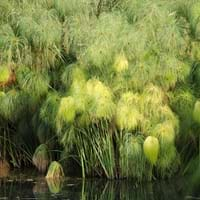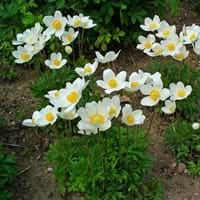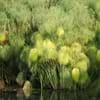Life Span
Perennial
Perennial
Type
Sedge or Rush
Tender Perennial
Origin
Africa
Mediterranean
Types
C. papyrus, C. papyrus 'Nanus
Blue Anemone, Greek Windflower, Carolina Anemone, Chinese Anemone
Habitat
Lakes, Shores of rivers or lakes, sluggish streams and rivers, Swamps
Wild
USDA Hardiness Zone
7-11
8-12
Sunset Zone
H1, H2, 16, 17, 23, 24
4, 5, 6, 7, 8, 9, 10, 11, 12, 13, 14, 15, 16, 17, 18, 19, 20, 21, 22, 23, 24
Habit
Clump-Forming
Clump-Forming
Minimum Height
Not Available
Minimum Width
Not Available
Flower Color
Tan
Sky Blue
Flower Color Modifier
Bicolor
Not Available
Fruit Color
Brown
Not Available
Leaf Color in Spring
Green, Light Green
Green
Leaf Color in Summer
Green, Light Green
Yellow, Green
Leaf Color in Fall
Green, Light Green
Not Available
Leaf Color in Winter
Green, Light Green
Not Available
Leaf Shape
Grass like
Compound
Plant Season
Spring, Summer, Fall, Winter
Spring
Sunlight
Full Sun, Partial Sun
Partial Sun, Partial shade
Type of Soil
Clay, Loam, Sand
Loam
The pH of Soil
Neutral
Acidic, Neutral
Soil Drainage
Poorly Drained
Average
Bloom Time
Indeterminate
Early Spring, Spring, Late Spring, Early Summer
Where to Plant?
Container, Ground, Pot
Ground, Pot
How to Plant?
Stem Planting
Seedlings
Plant Maintenance
Medium
Medium
Watering Requirements
Average Water Needs, Keep ground moist, Requires a lot of watering
Medium, Prefer drip-irrigation instead of Over-head watering, Use Mulches to help prevent water loss during hot and windy weather, Water Deeply
In Summer
Lots of watering
Lots of watering
In Spring
Moderate
Moderate
In Winter
Average Water
Average Water
Soil pH
Neutral
Acidic, Neutral
Soil Type
Clay, Loam, Sand
Loam
Soil Drainage Capacity
Poorly Drained
Average
Sun Exposure
Full Sun, Partial Sun
Partial Sun, Partial shade
Pruning
Remove damaged leaves, Remove dead branches, Remove dead leaves
Prune prior to new growth, Remove dead or diseased plant parts, Remove deadheads
Fertilizers
All-Purpose Liquid Fertilizer
All-Purpose Liquid Fertilizer
Pests and Diseases
fungus
Botrytis collar rot, Crown gall, Cucumber mosaic, Downy mildew, Impatiens necrotic spot, Leaf curl, Phytophthora, Rhizoctonia crown rot, Root rot, Rust, Sclerotinia blight, Southern blight
Plant Tolerance
Drought
Drought
Flower Petal Number
Single
Single
Foliage Texture
Not Available
Fine
Foliage Sheen
Glossy
Matte
Attracts
Flying insects, Hummingbirds
Not Available
Allergy
Not Available
Skin irritation
Aesthetic Uses
Showy Purposes
Not Used For Aesthetic Purpose
Beauty Benefits
Not Available
Not Available
Edible Uses
Insignificant
Yes
Environmental Uses
Air purification
Air purification
Medicinal Uses
Cancer, Heals minor burns, Wounds
Asthma, Cough, Gout, Menstrual Disorders, Stomach pain
Part of Plant Used
Stem
Flowers, Leaves
Other Uses
Constructing Boats, Used as fuel, Used in paper industry
Not Available
Used As Indoor Plant
Yes
No
Used As Outdoor Plant
Yes
Yes
Garden Design
Bog Garden, Container, Feature Plant, Houseplant, Mixed Border, Water Gardens
Bedding Plant, Container, Mixed Border, Rock Garden / Wall, Wildflower
Botanical Name
CYPERUS 'Wild Spike'
ANEMONE 'Harmony Blue'( HARMONY SERIES)
Common Name
Papyrus, Wild Spike Cyperus
Anemone, Harmony Blue Anemone
In Hindi
पेपिरस संयंत्र
रत्नज्योति
In German
ägyptischen Papyrus-Pflanze
Anemone
In French
Papyrus égyptien
Anémone
In Spanish
Papiro egipcio
Anémona
In Greek
αιγυπτιακό πάπυρο
ανεμώνη
In Portuguese
Papiro egípcio
Relutantemente
In Polish
Papiro egipcio
Zawilec
In Latin
CHARTA
VivoSocial
Phylum
Magnoliophyta
Magnoliophyta
Class
Agaricomycetes
Magnoliopsida
Order
Poales
Ranunculales
Family
Cyperaceae
Ranunculaceae
Clade
Angiosperms, Commelinids, Monocots
Not Available
Tribe
Cariceae
Not Available
Subfamily
Cyperoideae
Not Available
Number of Species
Not Available
Season and Care of Egyptian Papyrus and Anemone
Season and care of Egyptian Papyrus and Anemone is important to know. While considering everything about Egyptian Papyrus and Anemone Care, growing season is an essential factor. Egyptian Papyrus season is Spring, Summer, Fall and Winter and Anemone season is Spring, Summer, Fall and Winter. The type of soil for Egyptian Papyrus is Clay, Loam, Sand and for Anemone is Loam while the PH of soil for Egyptian Papyrus is Neutral and for Anemone is Acidic, Neutral.
Egyptian Papyrus and Anemone Physical Information
Egyptian Papyrus and Anemone physical information is very important for comparison. Egyptian Papyrus height is 60.00 cm and width 60.00 cm whereas Anemone height is Not Available and width Not Available. The color specification of Egyptian Papyrus and Anemone are as follows:
Egyptian Papyrus flower color: Tan
Egyptian Papyrus leaf color: Green and Light Green
Anemone flower color: Sky Blue
- Anemone leaf color: Green
Care of Egyptian Papyrus and Anemone
Care of Egyptian Papyrus and Anemone include pruning, fertilizers, watering etc. Egyptian Papyrus pruning is done Remove damaged leaves, Remove dead branches and Remove dead leaves and Anemone pruning is done Prune prior to new growth, Remove dead or diseased plant parts and Remove deadheads. In summer Egyptian Papyrus needs Lots of watering and in winter, it needs Average Water. Whereas, in summer Anemone needs Lots of watering and in winter, it needs Average Water.





